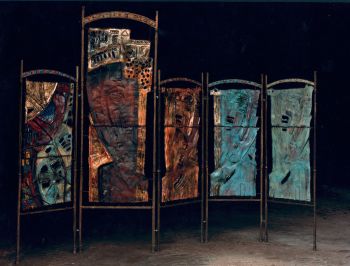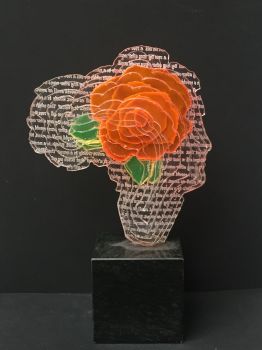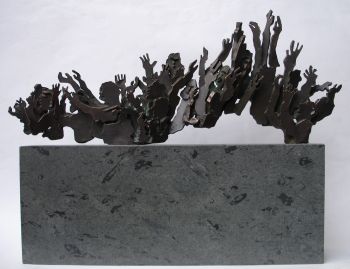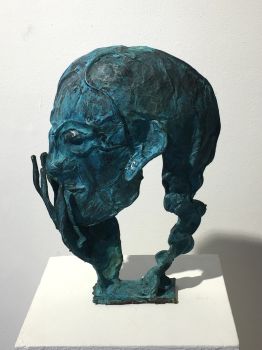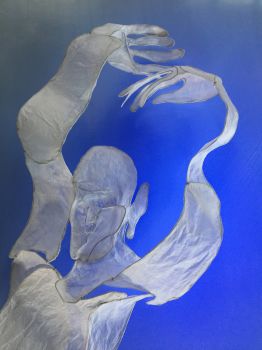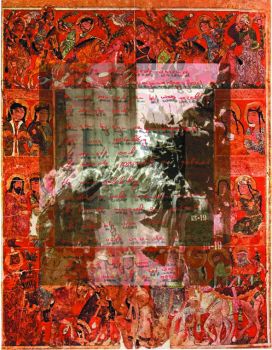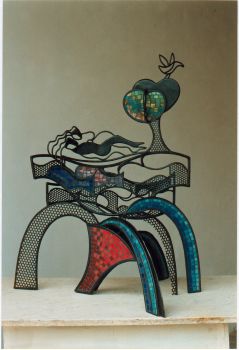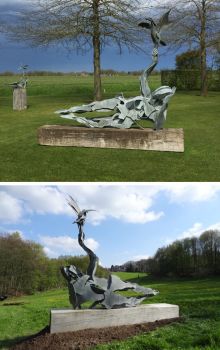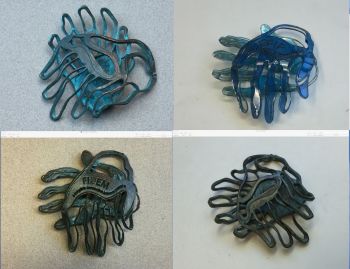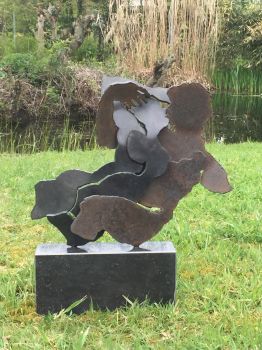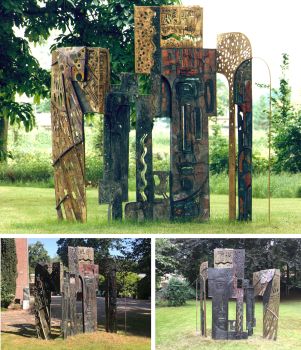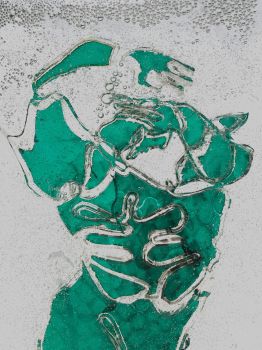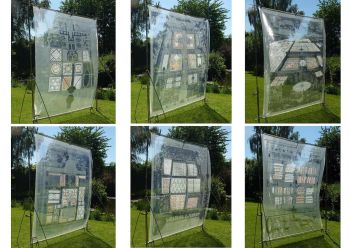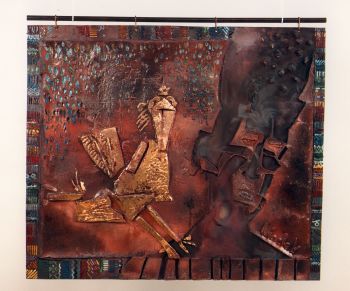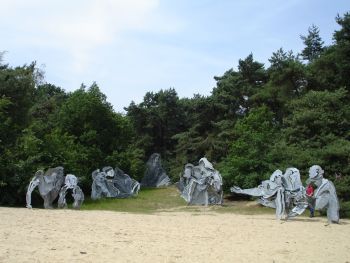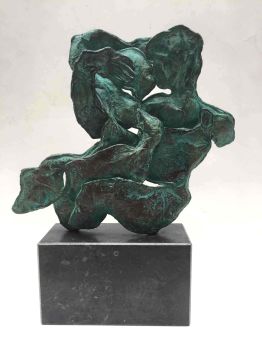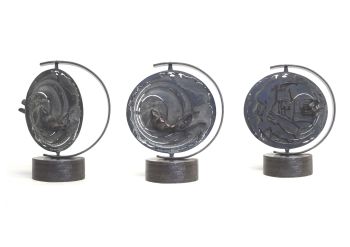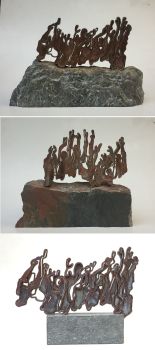Close-up: Linda Verkaaik's most beautiful artworks and projects
In 1995 Linda Verkaaik set a lake on fire. She did this during the annual Oerol festival on Terschelling, where during an evening and night ten thousand burning candles illuminated a water surface of one hundred by two hundred meters. In the darkness, the water burned for hours. Was it symbolic that this was a place called Doodemanskistenmeer? Life and death seemed to meet on a perishable altar. The next morning, when the candles had burned out, nature produced a surprising effect: the reflection in the water made it possible to associate the thousands of floats and tubes with a war cemetery full of lined up white crosses.
Water and connection
'Connection"
'Connection' is the word that characterized this project in several ways. The banks were literally tied together. But also opposing concepts became too connected: water and fire, light and darkness, life and death, hope and despair. The connection is not permanent, because no matter how beautifully the candles burn, they go out after a few hours.
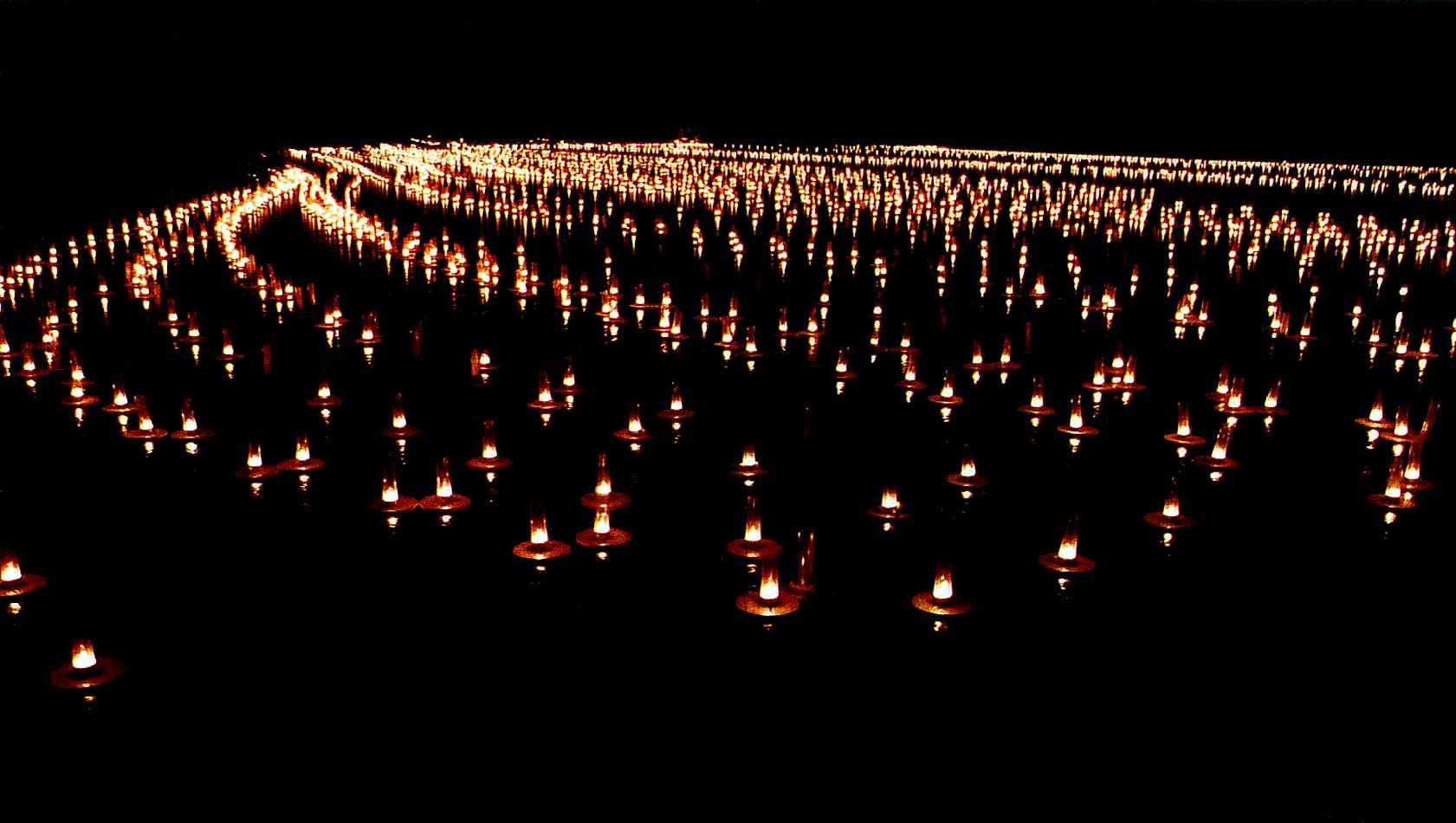 Lac de Lumiere by Linda Verkaaik, an installation for Oerol 1995, Terschelling
Lac de Lumiere by Linda Verkaaik, an installation for Oerol 1995, Terschelling
'Water'
In Linda Verkaaik's oeuvre, water takes on a special meaning. Water is the source of life, but you can drown in it. In a river, lake or sea, the surface of the water forms the boundary between an "upper world" that we think we know well, and an underworld that is dark and dangerous for most of us.
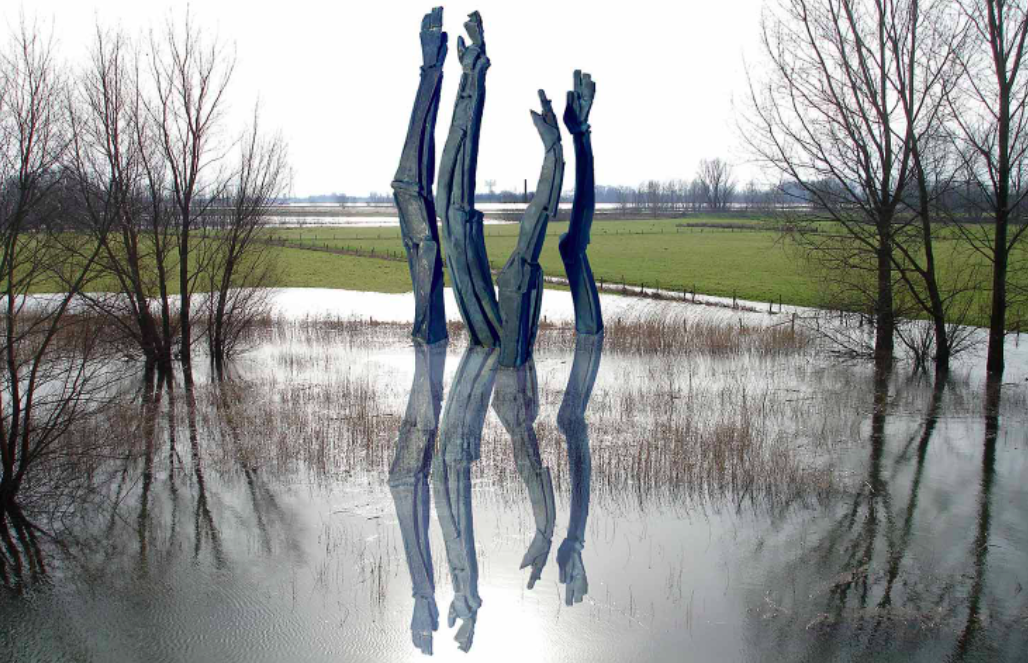 Beacons on the water, installations by Linda Verkaaik along the Waal
Beacons on the water, installations by Linda Verkaaik along the Waal
In 1996 and 1997 Linda Verkaaik realized a project Over water in various places in the Netherlands. Can humans really walk on water? It is in any case possible if it has frozen hard, but it is also possible, for example, when a layer of dew covers the earth early in the morning. Linda Verkaaik stretched pieces of gauze over water in the summer, which gave the impression of ice floes. An ambiguous picture, because ice floes only offer temporary support. Anyone standing on an ice floe has to jump off it as quickly as possible so as not to disappear into the depths.
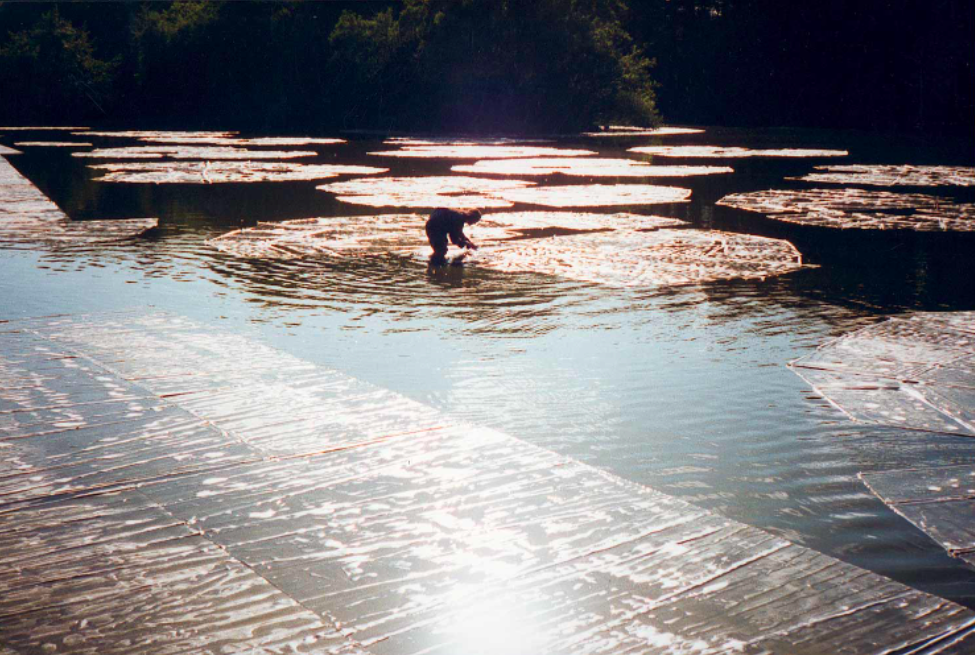 Who can walk on water, installation Linda Verkaaik for Oerol 1996, Terschelling. Dimensions 100 x 100 meters, diameter of 1 cartridge: 10 m
Who can walk on water, installation Linda Verkaaik for Oerol 1996, Terschelling. Dimensions 100 x 100 meters, diameter of 1 cartridge: 10 m
'The Diver'
The temptation of water is also reflected in the 2007 design of a six-metre-high sculpture The Diver. A human figure dives down. Above and next to him we see pieces of blue acrylic glass, which give the impression that the diver has already broken through the water surface, leaving a trail of concentric circles behind. The image of a diver evokes many associations. For example, it is a nice symbol for scientific research: if you want to discover new things, you will have to dive deep into a subject.
An elegant dive represents "mastery," but its effect can be unpredictable. It takes courage to jump into water from a great height, but at the same time the image contains the suggestion of failure. Perhaps Linda Verkaaik's diver is a high-flyer like Icarus, who is sadly coming to an end. Set up in the open air, the weather conditions play a role in this image: in good weather the sun shines through the blue-colored screens and we see a reflection on earth.
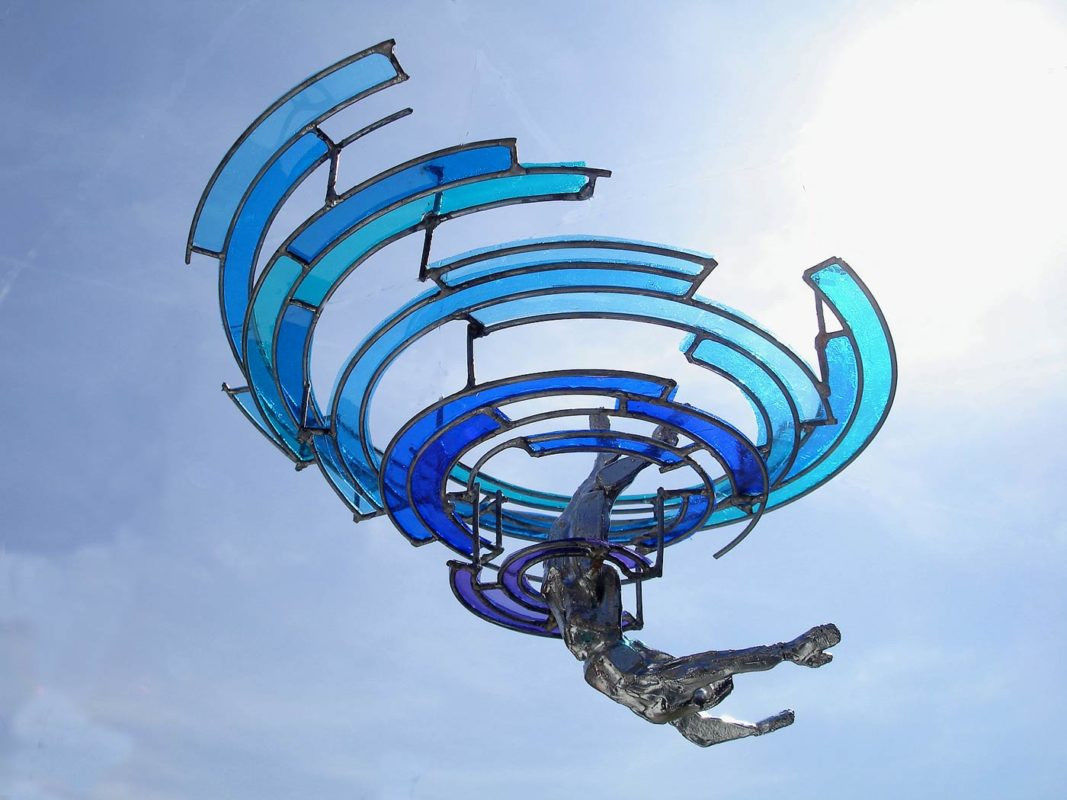 'The Diver' by Linda Verkaaijk
'The Diver' by Linda Verkaaijk
'The Wave'
Linda Verkaaik made several variations of an image called The wave. Its shape is inspired by the 'Mexican wave' from football stadiums. The wave that goes through a stadium shows how large numbers of attendees feel connected to each other. A 'Mexican wave' is dynamic, but strictly ordered: anyone who rises too quickly or too late disrupts the rhythm. Such a person excludes himself again. People therefore have to coordinate their behavior very accurately.
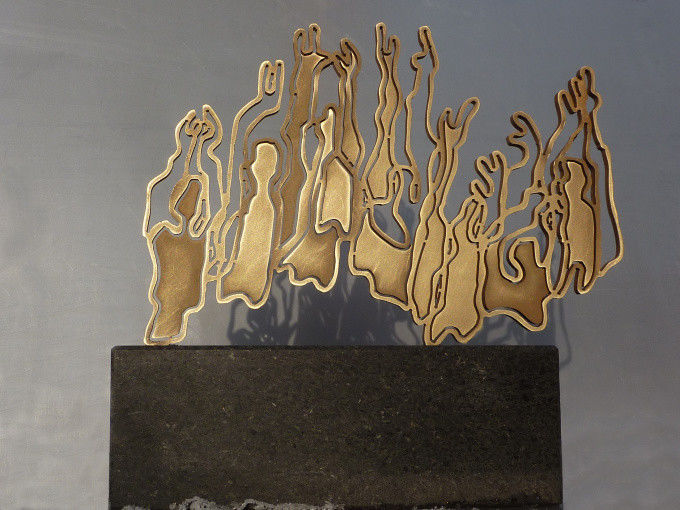 'The Wave' one of the statues in brass made by Linda Verkaaik
'The Wave' one of the statues in brass made by Linda Verkaaik
The image The wave consists of a series of raised arms and hands. The coordinated gestures suggest how strongly people are related to each other. There seems to be a collective cheer. But because we don't see faces in this image, an opposite interpretation is also possible. We can see the raised arms as a cry of despair.
That all arms go up at the same time may be a coincidence: perhaps we only see people who, in their misery, are all thrown back on themselves at the same time. Raised hands also allow for different interpretations. This may concern joint impotence, but also the strength to break resistance jointly. We see hands and arms in various works by Linda Verkaaik. Where words fail, non-verbal communication is the most basic form of human contact.
 Memorial 'The Wave' in Marken by Linda Verkaaik
Memorial 'The Wave' in Marken by Linda Verkaaik
Colored and clear screens
Linda Verkaaik also made numerous installations in which colored and transparent screens have an important function. Like canopies, they block rain and filter the bright sunlight. As a longitudinal roof, they suggest a walking direction. Due to their dominant presence in a built environment, they also provide a connection between people, because it is attractive to go to colorful places. In daylight, such canopies also tempt us not to just look straight ahead.
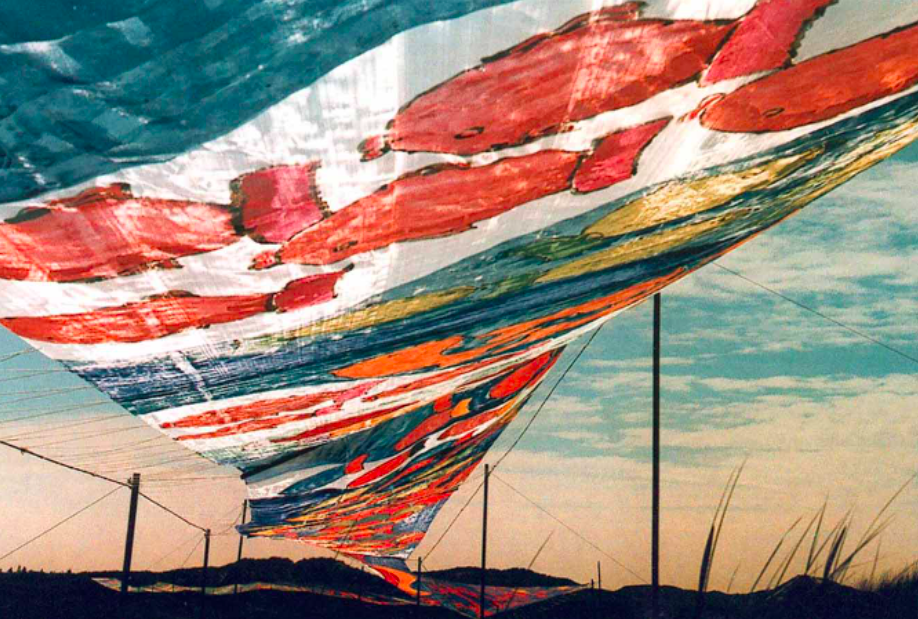 Mirage by Linda Verkaaik, Oerol 1998
Mirage by Linda Verkaaik, Oerol 1998
Under a colored roof, the world seems to become more spacious. It pays to look up and down at the reflection of colors. On the ground is a tempting hopscotch field. At the same time, that hopscotch field confronts us with the limitations of existence, because the colors on the ground are not stable. Due to the rotation of the earth around the sun, they shift, only to dissolve into darkness towards evening. We cannot stop the passage of time. Nothing is permanent.
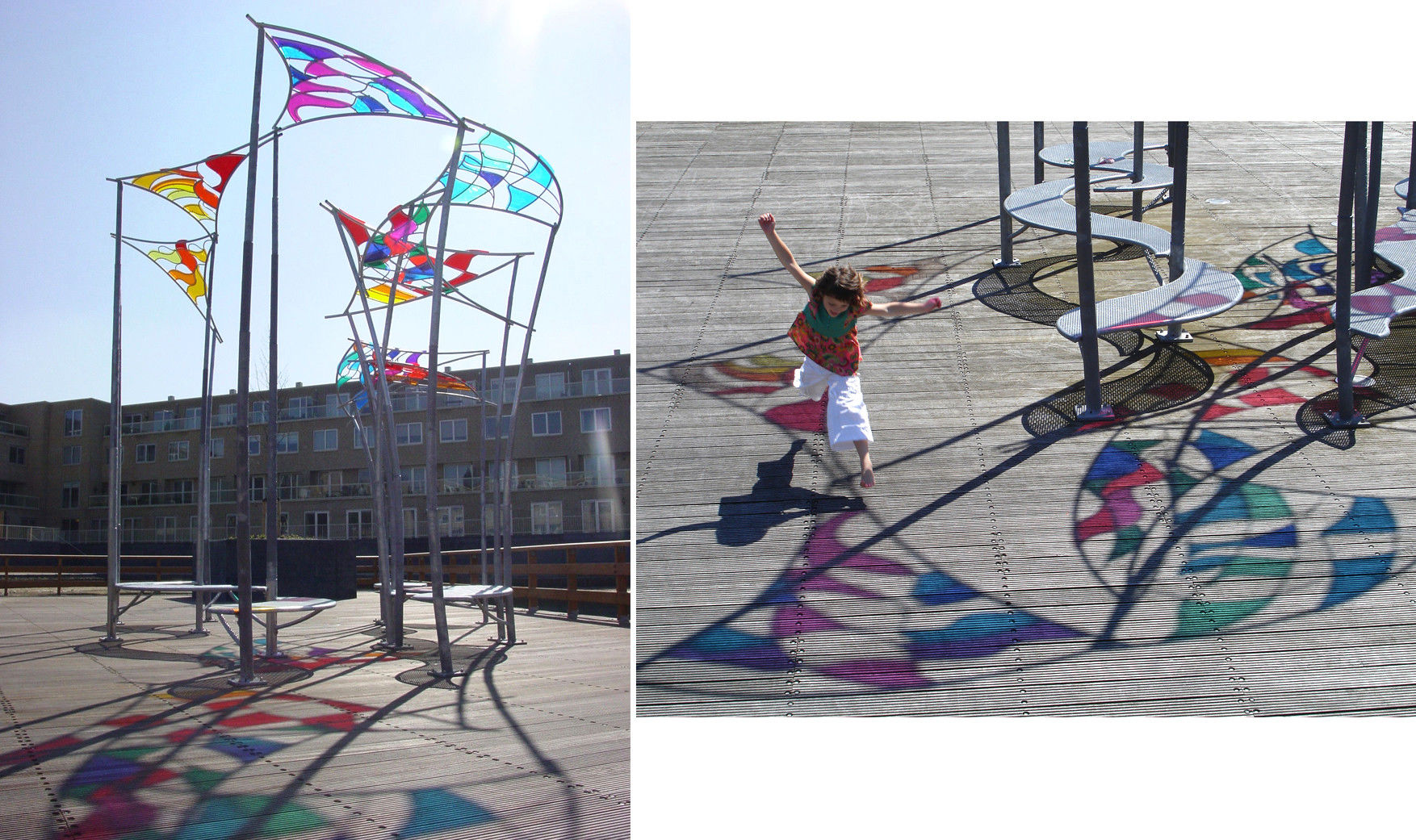 4 Kites in Zandvoort by artist Linda Verkaaik
4 Kites in Zandvoort by artist Linda Verkaaik
In other places Linda Verkaaik stretched pieces of gauze above the ground in such a way that a maze of mist appeared to be created. Whoever walked through this maze could imagine themselves in the upper and the underworld at the same time. She also stretched gauze cloth between trees at various heights: as if sunlight was now filtered through veils of mist. This produces beautiful images, but anyone who is shrouded in mystery has lost contact with the world known to us at that moment.
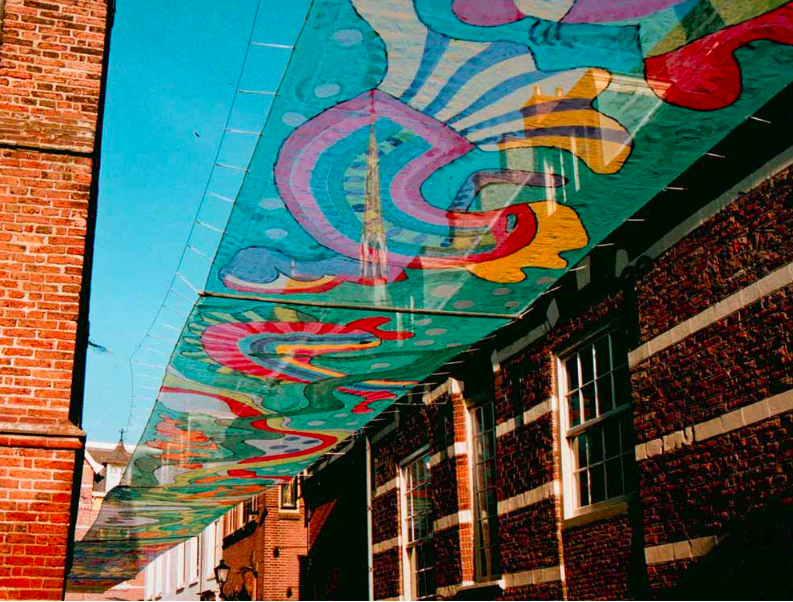 Mirage variations, as part of Lekart in Culemborg
Mirage variations, as part of Lekart in Culemborg
'Mystical Cathedrals'
Initially, Linda exhibited her bronze and brass cathedrals with enamel inlay. Ingenious structures of majestic allure. Her work is inspired by medieval ruins and ancient excavations. She was fascinated by the grandeur and mystique of a bygone era with which our contact has faded, but not broken. With her work Linda Verkaaik confronts us with seemingly small events in a large mythical world of unprecedented human possibilities. The symbolism of her work tells about life and death, about living and experiencing together and of course about connection.
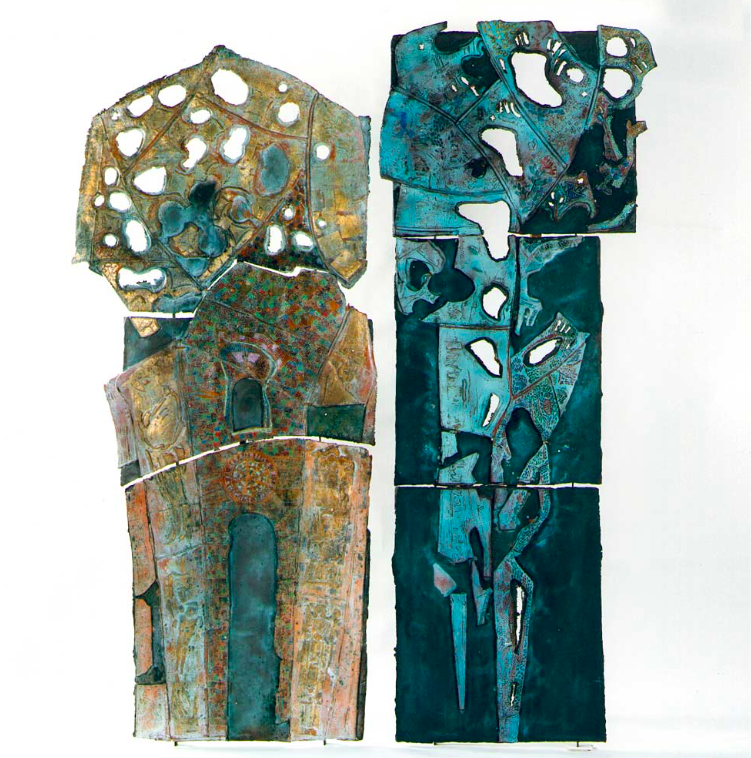 'Cathedrals touching each other', Panel of bronze & enamel by Linda Verkaaik
'Cathedrals touching each other', Panel of bronze & enamel by Linda Verkaaik
'Ecco Homo' puts people first
Just before the turn of the millennium - in 1997 - Linda took part in the themed exhibition 'Ecce Homo'. People are central to this exhibition. Artists were asked to give their vision of man in the year 2000. Was it the same person as 100 or 1000 years ago? Or have advanced media techniques, increased medical possibilities, extensive commerce exerted their influence on humans, and if so, which ones?
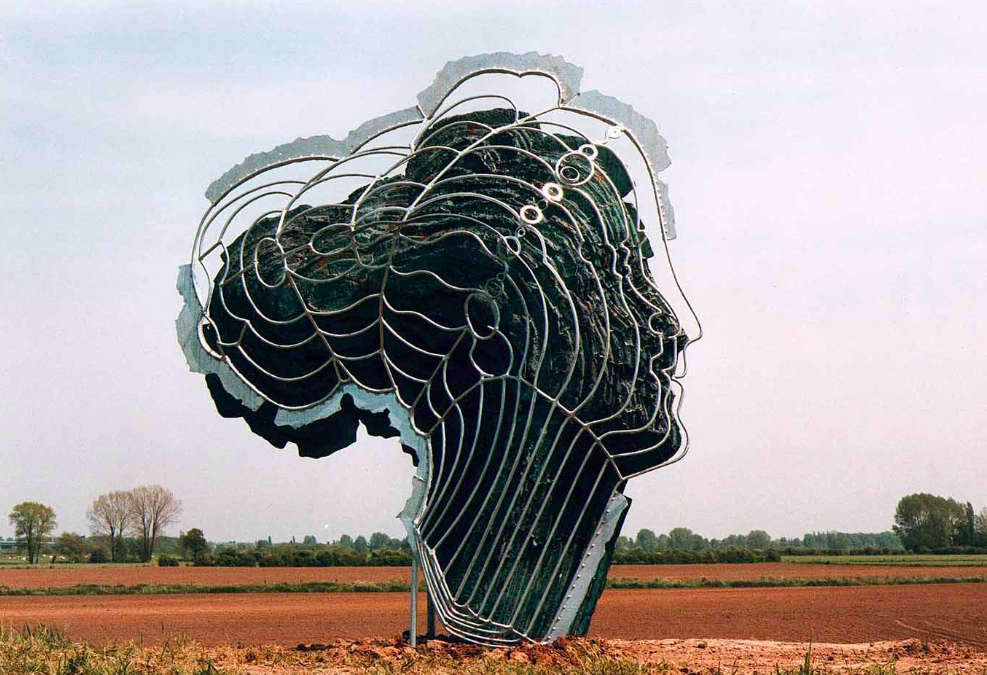 Ecce Homo statue with the same name in the landscape by Linda Verkaaik
Ecce Homo statue with the same name in the landscape by Linda Verkaaik
The fairytale 'Transpanoramis'
A year later Linda Verkaaik came up with a new project: Het Transpanoramaris. After the summer exhibition, a large part of the garden became available and at the end of October an installation consisting of 20 canvases measuring 3 by 10 meters, enriched with colorful underwater scenes, was created. They enclosed the viewer in diaphragm form, who saw the outside world from the inside through transparent layers. In the evenings, the project was illuminated by spotlights and accompanied by experimental music in the form of underwater sounds.
 The Transpanoramaris' a fairytale project by Linda Verkaaik
The Transpanoramaris' a fairytale project by Linda Verkaaik
After lighting 800 lights within the multi-layered Transpanoramaris during Christmas - which created a fairytale effect - at the end of February 1999, this special installation was given a grand farewell. With an audio-visual projection from 10 video beamers, a spectacle of film and sound was created that, despite the pouring rain, many have enjoyed. It was not so much the seeing as the experiencing and undergoing that surprised and stayed with the visitor.
 'The last supper' by Linda Verkaaik also available as freestanding sculptures
'The last supper' by Linda Verkaaik also available as freestanding sculptures
'The Last Supper (Pieta)'
In the exhibitions at HazArt it is usually Linda who comes up with the most special projects and who never gives up in realizing them. Her last major project at HazArt was in 2003: The Last Supper – (L'Ultima Cena); inspired by Leonardo da Vinci's mural of the same name. First executed as a sketch and later on a very large format in galvanized steel.
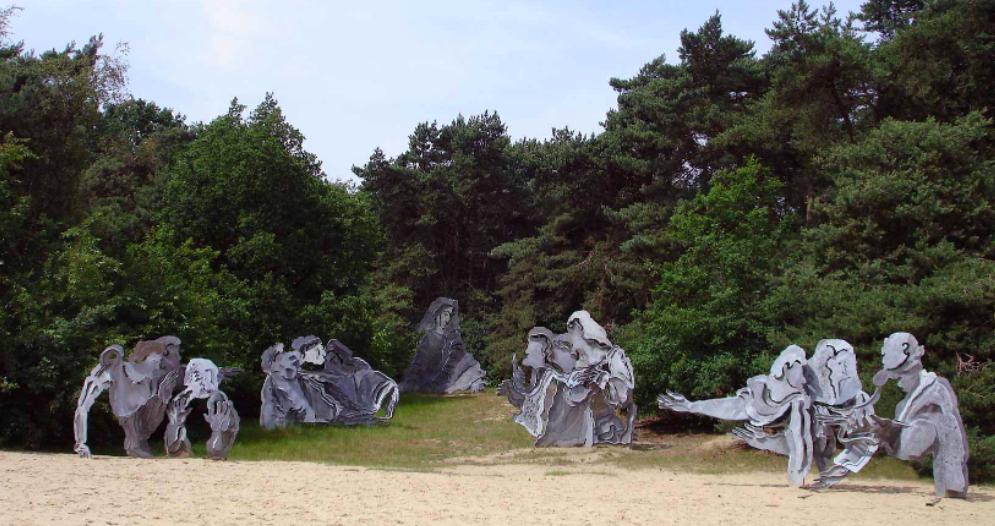 Transmission (the last supper) in the Odapark, Venray designed and made by Linda Verkaaik
Transmission (the last supper) in the Odapark, Venray designed and made by Linda Verkaaik
Free assignments and work on assignment
In addition to assignments for individuals, agencies and companies, Linda also makes 'free assignments'. In the free assignments there is less emphasis on the themes that dominate her work; here she can let loose and lose herself in frivolous shapes, colours, light and movement.
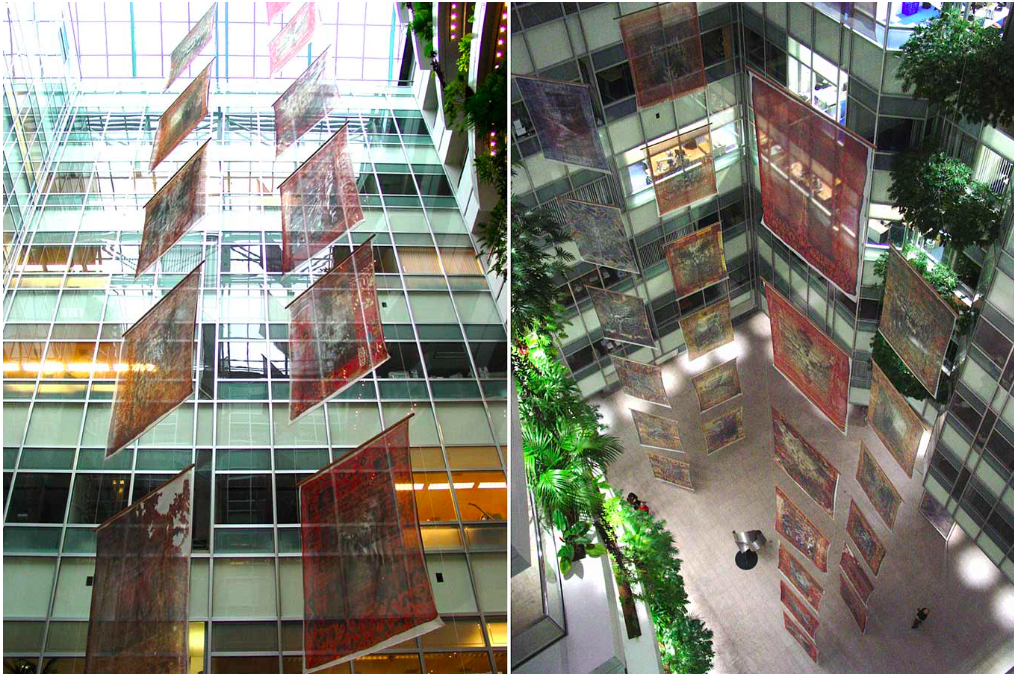 'Transparent Carpets', by Linda Verkaaik in the World Trade Center of Amsterdam, example of an assignment for companies
'Transparent Carpets', by Linda Verkaaik in the World Trade Center of Amsterdam, example of an assignment for companies
An overview of 'free commissions' and 'commissioned works' by Linda Verkaaik can also be found here on Gallerease. Some of these works are immediately available, but if you are interested in having a work specially made by Linda Verkaaik, you can simply leave a message via the contact field at the relevant work or simply send an email to info@gallerease.com
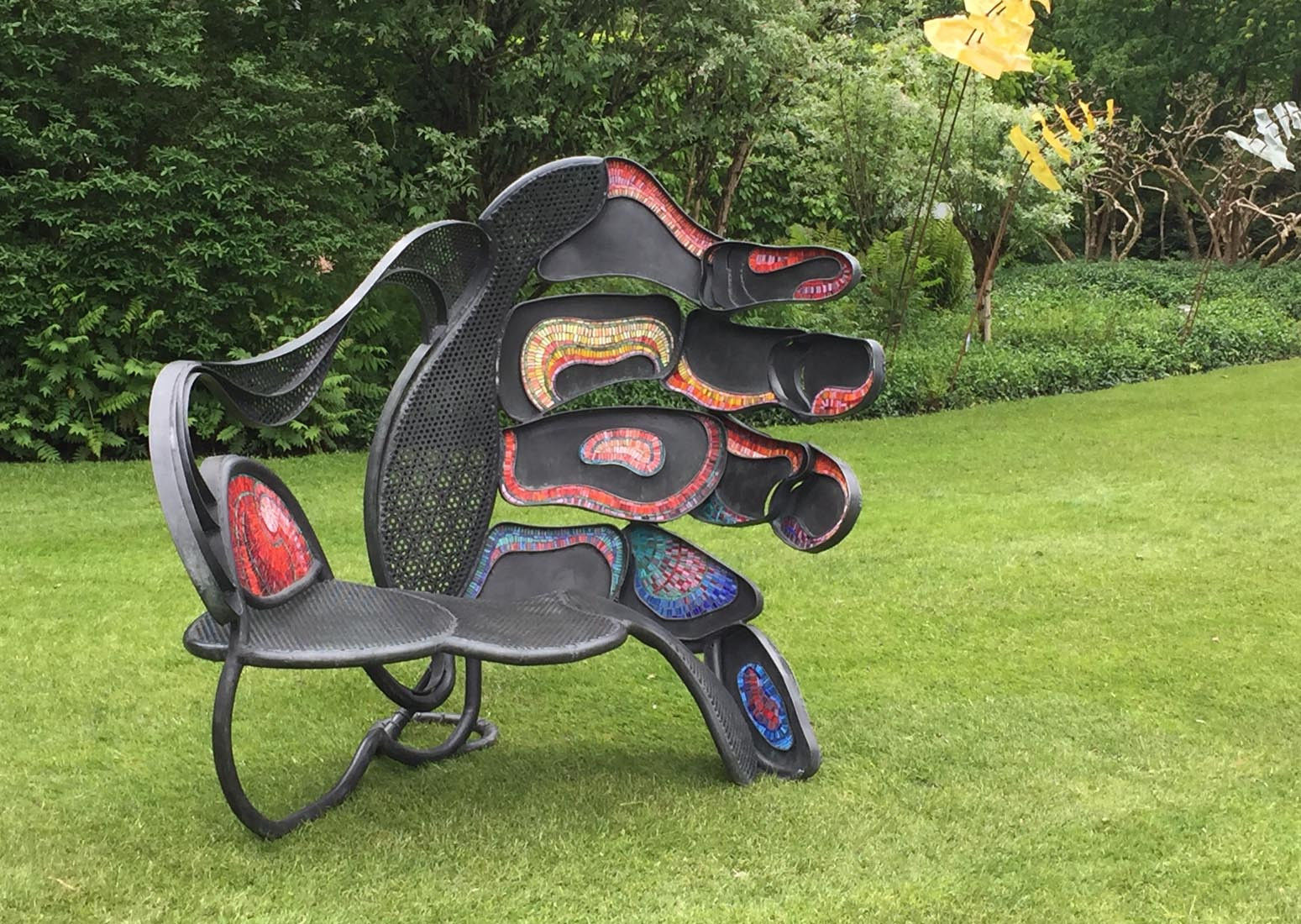 A nice example of a private commission by Linda Verkaaik for a chair/bench in the garden 'Sitting on my hand'
A nice example of a private commission by Linda Verkaaik for a chair/bench in the garden 'Sitting on my hand'
* the artwork depicted in the header at the top, his installations along the Waal are called 'Beacons on the water'


